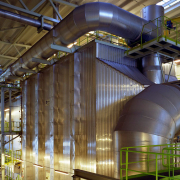Calling on MEPs to Protect Waste Management in the ETS Revision
Climate urgency calls for a swift decarbonisation of Europe, and the Emissions Trading System (EU ETS) is the cornerstone of this effort, incentivising industries to decrease their GHG emissions.
In this context, ESWET wishes to remind the legislators of the importance of preserving the integrated feature of waste management if they want to successfully decarbonise the waste sector. Waste prevention, re-use, and recycling are the rightful priorities. However, making Waste-to-Energy (WtE) more expensive will not necessarily improve the waste management framework.
Quite the opposite, non-recyclable waste could be diverted more to landfills, as the cheapest alternative, hampering the waste hierarchy. The treatment with Waste-to-Energy will become more expensive for both municipalities and the recycling industry relying on WtE to treat non-recyclable waste rejected from its facilities.
Supporting a balanced waste management ecosystem is key to reach the EU objectives of decarbonisation, circular economy and zero pollution – Patrick Clerens, Secretary General of ESWET underlines – That is why ESWET calls on the European Parliament to stress the need for a conditional impact assessment prior to any inclusion of Waste-to-Energy in the ETS to ensure it does not trigger detrimental side-effects on the entire waste management chain.
When it comes to GHG emissions from the waste sector, landfills are the main source through emissions of methane which is a GHG 86 times more potent that CO2 over a 20-year period. Diversion from landfill is the main contributor to GHG mitigation in the waste management sector and Waste-to-Energy plants have the mission to make sure non-recyclable waste is not sent to landfills!
Instead, incinerators with energy and materials recovery (Waste-to-Energy) offset their emissions via landfill diversion, and recovery of energy (electricity, heating and cooling, and steam) and materials (aluminium, iron, copper, among others) that would otherwise be lost for the circular economy.
As a further step, Waste-to-Energy has the potential to go carbon negative with the integration of CCUS technologies. Yet proper EU support is needed to enable WtE contribute to clean electricity production and reduction of GHG emissions, attributes that the recent 2022 IPCC report boldly recognises.
Source: ESWET (Brussels, June 20, 2022)








